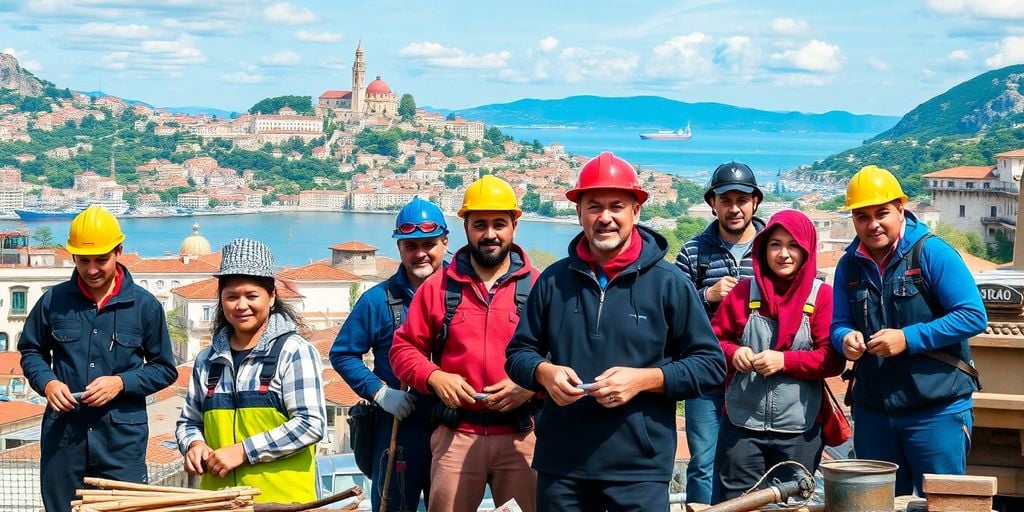Croatia has seen a significant increase in the issuance of work permits, with over 53,000 granted in the first quarter of 2025. This surge reflects the country’s growing reliance on foreign labor, particularly as it prepares for the upcoming summer tourist season.
Key Takeaways
- Total Work Permits Issued: 53,662 in the first three months of 2025.
- Leading Sectors: Construction and tourism dominate the demand for foreign workers.
- Top Nationalities: Nepali citizens received the highest number of permits, followed by workers from the Philippines and Bosnia.
- New Legislation: A new law aims to streamline the hiring process for foreign workers.
Overview of Work Permits Issued
In the first quarter of 2025, Croatia issued a total of 53,662 residence and work permits, marking a 3% increase compared to the same period last year. The breakdown of these permits is as follows:
- New Employment: 68% of permits issued.
- Extensions: 32% of permits.
- Seasonal Work: 4% of permits.
The construction sector led the way with 17,300 permits, followed closely by tourism and hospitality with 16,000 permits. Other sectors included industry (7,200), transport (4,400), and trade (2,800).
Nationalities of Workers
The distribution of work permits by nationality highlights a shift in Croatia’s labor market:
- Nepal: Approximately 12,000 permits issued.
- Philippines: About 9,950 permits.
- Bosnia and Herzegovina: Around 9,400 permits.
- Serbia: Approximately 5,850 permits.
- India: About 5,550 permits.
This trend indicates a growing reliance on workers from Nepal, who have now become the largest group of foreign laborers in Croatia, surpassing traditional sources like Bosnia and Herzegovina.
Impact of New Legislation
The recent Law on Foreigners, introduced in March 2025, aims to create a more organized and predictable framework for employing foreign workers. Key features of the law include:
- Three-Year Permits: Work permits now last for three years, allowing for better workforce planning.
- Increased Scrutiny: The government is cracking down on illegal employment, with over 90 employers already blacklisted for violations.
- Support for Domestic Employment: New incentives are in place to encourage the hiring of local workers, especially during peak seasons.
However, some employers have expressed concerns about new financial requirements, which mandate that companies demonstrate a monthly income of €10,000 or €15,000 for tradespeople over the past six months. This has posed challenges, particularly for seasonal businesses that may not have steady income during off-peak months.
Future Outlook
As Croatia prepares for the summer tourist season, the demand for foreign labor is expected to rise further. Industry leaders estimate that the country will need up to 70,000 seasonal workers to meet the demands of its thriving tourism sector, which accounts for approximately 20% of GDP.
The ongoing demographic challenges, including a declining population and an aging workforce, underscore the importance of foreign labor in sustaining economic growth. By 2030, Croatia may require between 450,000 to 500,000 foreign workers to fill gaps in the labor market, particularly in sectors like tourism, construction, and manufacturing.
In conclusion, Croatia’s proactive approach to managing its labor market through the issuance of work permits and the implementation of new laws reflects its commitment to addressing workforce shortages and supporting economic growth in a rapidly changing demographic landscape.
Sources
- Croatia Issues Highest Number of Work Permits to Nepali Citizens, Total Croatia.
- Croatia faces labour market squeeze ahead of summer tourist season, bne IntelliNews.
- Croatia issues over 53,000 work permits in three months, Croatia Week.






